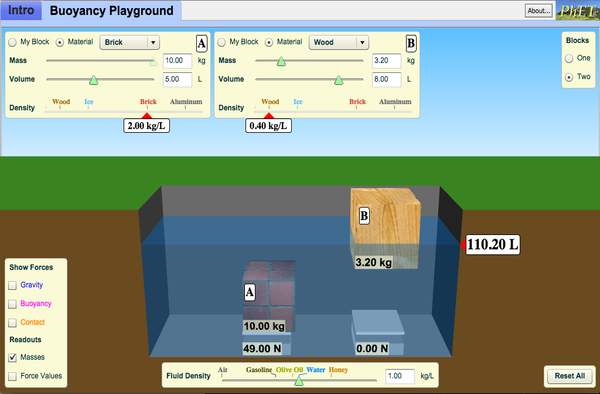32 Buoyant Force
Archimedes’ Principle
Archimedes' Principle states that the buoyant force exerted on an object by a fluid is equal to the weight of the fluid displaced by the object.
Reinforcement Exercises
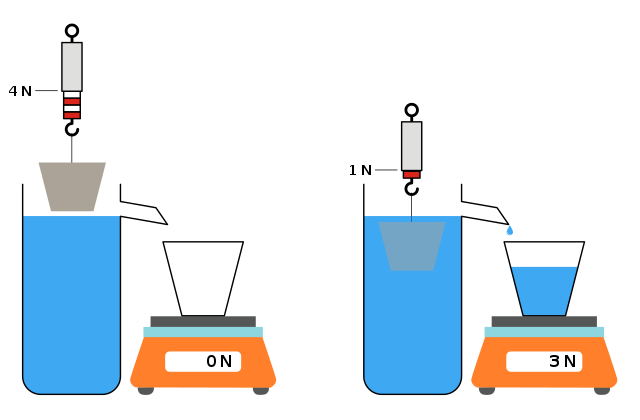
Buoyant Force and Density
A given mass of low density tissue will take up more volume relative to the same mass of high density tissue. Taking up the extra volume means more water is displaced when the body is submerged so the buoyant force will be larger compared to the weight than it would be for a more dense body. In turn, that means that apparent weight is smaller relative to actual weight for bodies of higher density. By comparing weight and apparent weight, the body density can be determined. We will do that in the next chapter, but first we should become more familiar with the Buoyant force.
Everyday Example
The water displaced by a brick weighs less than the brick so the buoyant force cannot cancel out the weight of the brick and it will tend to sink (left diagram). To hold the brick in place you must provide the remaining upward force to balance the weight and maintain static equilibrium. That force is less than the weight in air so the brick appears to weigh less in the water (right diagram).
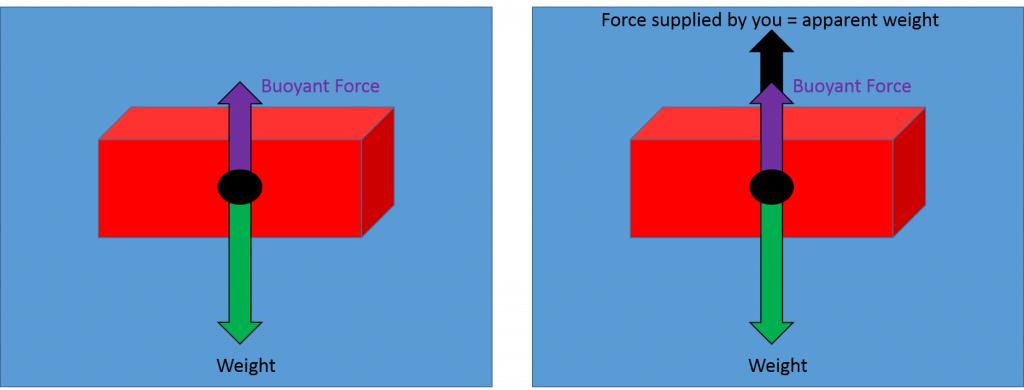
If you let go of the brick it will be out of equilibrium and sink to the pool bottom. At that point the pool bottom is providing the extra upward force to balance out the weight, and the brick is once again in static equilibrium.
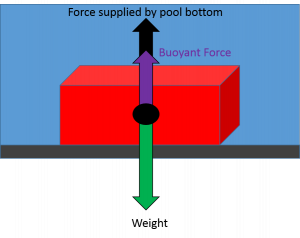
The water displaced by an entire beach ball weighs more than a beach ball, so if you hold one under water the buoyant force will be greater than the weight. Your hand is providing the extra downward force to balance out the forces and maintain static equilibrium (left diagram). When you let go, the forces will be unbalanced and the ball will begin moving upward (right diagram).
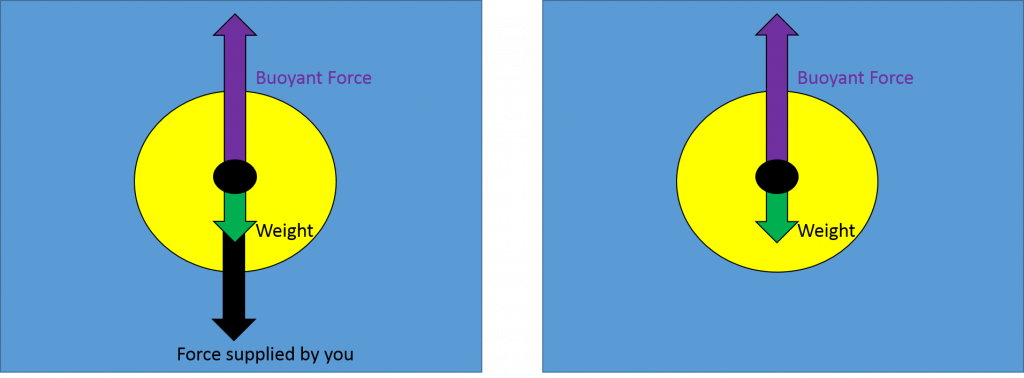
The density of ice is only about 9/10 that of water. The weight of the water displaced by only 9/10 of the iceberg has the same weight as the entire iceberg. Therefore, 1/10 of the iceberg must remain exposed in order for the weight and buoyant forces to be balanced and the iceberg to be in static equilibrium.
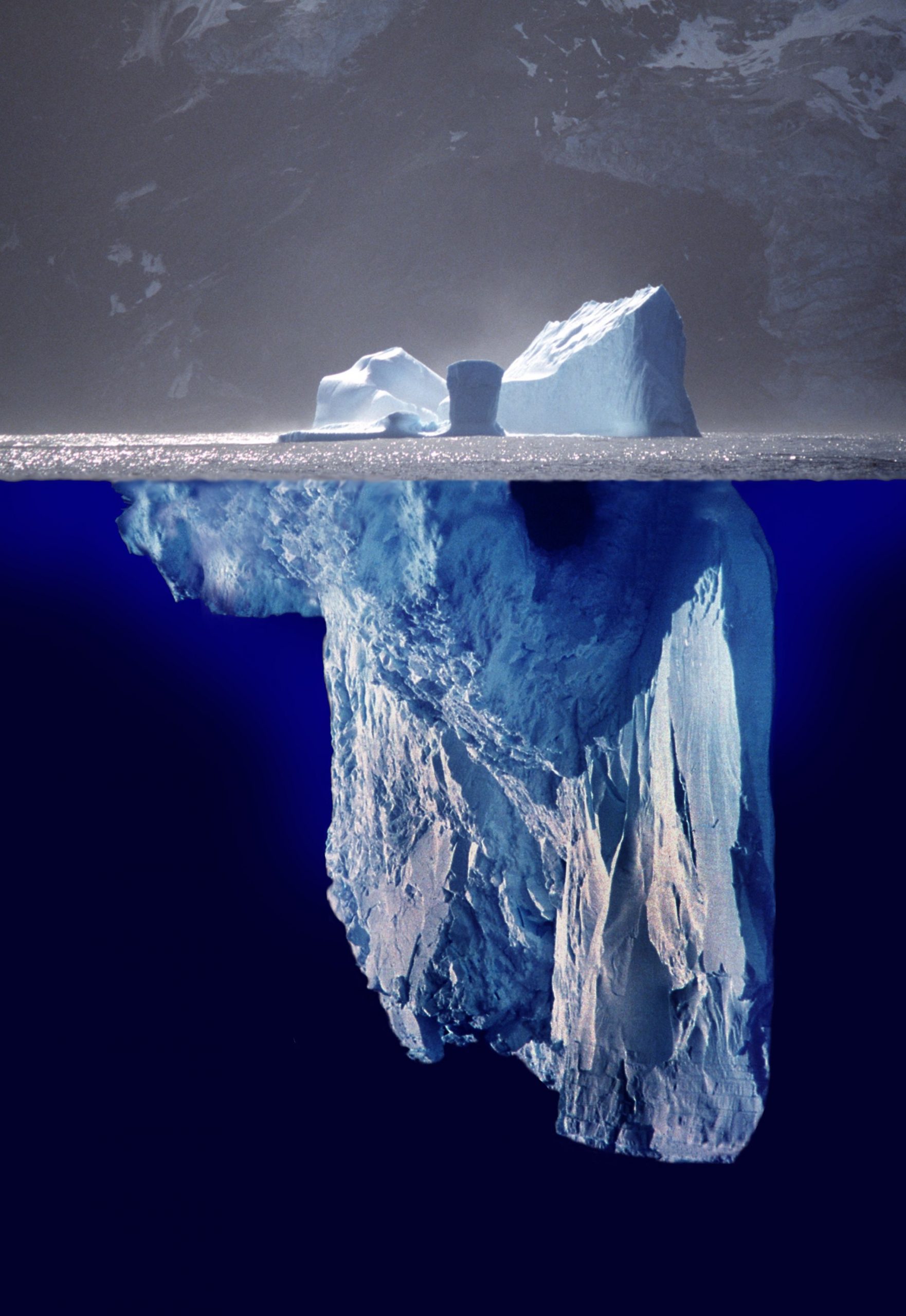
Check out this buoyancy simulation which lets you control how much objects of different masses are submerged and shows you the resulting buoyant force along with forces provided by you and a scale at the bottom of the pool (apparent weight).
Reinforcement Exercises
Not-So-Everyday Example
Submarines control how much water they displace by pumping water in and out of tanks within the submarine. When water is pumped inside, then that water is not displaced by the sub and it doesn’t count toward increasing the buoyant force. Conversely, when water is pumped out that water is now displaced by the sub and the buoyant force increases, which is the concept behind the maneuver in the following video:
- "Archimedes-principle"By MikeRun [CC BY-SA 4.0 (https://creativecommons.org/licenses/by-sa/4.0)], from Wikimedia Commons ↵
- "Iceberg" created by Uwe Kils (iceberg) and User:Wiska Bodo (sky). [GFDL (http://www.gnu.org/copyleft/fdl.html) or CC-BY-SA-3.0 (http://creativecommons.org/licenses/by-sa/3.0/)], via Wikimedia Commons ↵
The upward buoyant force that is exerted on a body immersed in a fluid, whether fully or partially submerged, is equal to the weight of the fluid being displaced by the body
a measurement of the amount of matter in an object made by determining its resistance to changes in motion (inertial mass) or the force of gravity applied to it by another known mass from a known distance (gravitational mass). The gravitational mass and an inertial mass appear equal.
relation between the amount of a material and the space it takes up, calculated as mass divided by volume.
a quantity of space, such as the volume within a box or the volume taken up by an object.
pushed out of original position, typically in reference to fluid pushed out of the way by an object placed in the fluid, or an object being displaced from its equilibrium position
the upward force exerted by any fluid upon a body placed in it
the force of gravity on on object, typically in reference to the force of gravity caused by Earth or another celestial body
the state being in equilibrium (no unbalanced forces or torques) and also having no motion
a state of having no unbalanced forces or torques
the reading on a scale that is used to measure the weight of an object that is submerged in a fluid

